
La théorie civilisationnelle d’Herman Wirth
Alexandre Douguine
Le Cercle Culturel de Thulé
L’idée de Bachofen d’un matriarcat primordial et sa théorie des « cercles culturels » furent développés par un autre historien et archéologue, un spécialiste en paléo-épigraphie, Herman Wirth (1885-1981).
Les théories de Wirth sont basées sur l’hypothèse empruntée à l’auteur indien Bala Gandhara Tilak (1856-1920) [1], selon qui la civilisation proto-indo-européenne originelle se forma à la fin du Paléolithique (la culture aurignacienne) dans la région du cercle polaire nordique. Cette hypothèse était basée sur l’interprétation des données de l’astrologie indienne, des textes védiques, et des mythes des Hindous, des Iraniens et des Grecs, qui parlent de l’existence dans l’antiquité lointaine d’un pays habité se trouvant dans le Grand Nord (Hyperborée). Ce continent étai décrit dans les Vedas comme la « terre du sanglier blanc », Varahi, et l’« île de lumière », ou Sweta Dvipa. La tradition zoroastrienne parle de l’ancienne résidence du premier homme, la cité de Vara, située dans le Grand Nord, qu’il fut forcé de quitter pour descendre vers le sud quand la déité obscure Angra Mainyu, l’ennemi du dieu de la lumière Ahura-Mazda, déchaîna un « grand froid » sur cette contrée. Tilak affirme l’existence de cette proto-civilisation « nordique » sur la base de l’astrologie indienne, dont le symbolisme, selon Tilak, ne devient clair que si nous acceptons que les constellations furent originellement observées dans les régions circumpolaires, où le jour des dieux est égal à l’année des hommes.
 Wirth adopta cette hypothèse et construisit sa propre théorie sur elle, la « théorie hyperboréenne » [2] ou théorie du « cercle culturel de Thulé » [3], qui est le nom grec de la cité mythique se trouvant dans le pays des Hyperboréens. D’après cette théorie, avant la dernière vague de refroidissement mondial, la zone circumpolaire dans l’Océan nord-atlantique abritait des terres habitables dont les habitants furent les créateurs d’un code culturel primordial. Cette culture se forma dans des conditions où l’environnement naturel de l’Arctique n’était pas encore si inhospitalier, et où son climat était similaire au climat tempéré de l’Europe Centrale moderne. Cependant, étaient présents tous les phénomènes annuels et atmosphériques qui peuvent être observés dans l’Arctique aujourd’hui : le jour et la nuit arctiques. Les cycles solaire et lunaire annuels sont structurés différemment de leurs équivalents sous les latitudes moyennes. Ainsi, les fixations symboliques du calendrier, la trajectoire du soleil, de la lune et les constellations du zodiaque avaient forcément une forme différente et des motifs différents.
Wirth adopta cette hypothèse et construisit sa propre théorie sur elle, la « théorie hyperboréenne » [2] ou théorie du « cercle culturel de Thulé » [3], qui est le nom grec de la cité mythique se trouvant dans le pays des Hyperboréens. D’après cette théorie, avant la dernière vague de refroidissement mondial, la zone circumpolaire dans l’Océan nord-atlantique abritait des terres habitables dont les habitants furent les créateurs d’un code culturel primordial. Cette culture se forma dans des conditions où l’environnement naturel de l’Arctique n’était pas encore si inhospitalier, et où son climat était similaire au climat tempéré de l’Europe Centrale moderne. Cependant, étaient présents tous les phénomènes annuels et atmosphériques qui peuvent être observés dans l’Arctique aujourd’hui : le jour et la nuit arctiques. Les cycles solaire et lunaire annuels sont structurés différemment de leurs équivalents sous les latitudes moyennes. Ainsi, les fixations symboliques du calendrier, la trajectoire du soleil, de la lune et les constellations du zodiaque avaient forcément une forme différente et des motifs différents.
A partir d’une énorme quantité de matériel archéologique, paléo-épigraphique (peintures rupestres, symboles paléolithiques, anciennes gravures, etc.), mythologique et philologique, Herman Wirth tenta de reconstruire le système primordial du code culturel de cette proto-civilisation arctique. Au cœur de celui-ci il plaça le proto-calendrier reconstruit, dont les dernières traces sont constituées d’après Wirth par les runes scandinaves, qu’il attribuait à l’antiquité éloignée. Wirth proposa d’examiner ce calendrier, qui enregistre les moments clés de l’année arctique, comme étant la clé de toutes les versions ultérieures des héritages mythologiques, religieux, ritualistes, artistiques et philosophiques qui continuèrent et développèrent cet algorithme primordial au cours des vagues de migrations des porteurs de la « culture thuléenne » dans les régions méridionales. Lorsqu’on les appliqua à d’autres conditions climatiques, cependant, beaucoup des motifs symboliques de ce calendrier, qui étaient parfaitement clairs dans l’Arctique, perdirent leur sens et leur justification. Ils furent partiellement transférés à de nouvelles réalités, partiellement transformés en reliques, et perdirent partiellement leur sens ou en acquirent de nouveaux.
D’abord et avant tout, ce changement entraîna une compréhension fondamentalement nouvelle de l’unité de base du temps : à la place du jour hyperboréen qui est égal à une année, c’est le cercle du jour qui est beaucoup plus clairement défini dans les régions au sud du cercle polaire qui devint la mesure des événements de la vie humaine. De plus, les points indiquant les équinoxes de printemps et d’automne changèrent en relation avec le mouvement en direction du sud. Tout cela obscurcit graduellement la clarté et la simplicité parfaites de la matrice primordiale.
Wirth pensait que sa reconstruction du système sacré de la culture de Thulé se trouvait au cœur de tous les types historiques d’écriture et de langage, ainsi que des tons musicaux, du symbolisme des couleurs, des gestes rituels, des inhumations, des systèmes religieux, etc.
L’étude de cette culture forma la base des tentatives de Wirth pour reconstruire ce qu’il nommait la « proto-écriture » ou « proto-script » de l’humanité. Wirth publia les résultats de ses études dans deux ouvrages monumentaux, Der Aufgang der Menschheit (La marche en avant de l’Humanité) [4] et Die Heilige Urschrift der Menschheit (L’écriture originelle sacrée de l’Humanité) [5], incluant tous deux une grande quantité de tables synoptiques, d’illustrations comparatives de fouilles archéologiques, de systèmes d’écriture, etc.
Matriarcat nordique
Wirth adopta l’idée de Bachofen d’un matriarcat primordial et attribua à la « culture de Thulé » une forme matriarcale de civilisation. Il suggéra que la croyance selon laquelle le genre féminin tend à la matérialité, à la corporéité, à la chtonicité et à des spécificités empiriques est un pur produit de la censure patriarcale, et que le matriarcat pouvait être un phénomène tout aussi spirituel, et même plus, que le patriarcat. Wirth pensait que les sociétés dominées par des femmes, et par des clergés, des religions et des cultes féminins représentaient les types les plus avancés de la culture hyperboréenne, qu’il nommait la « culture des Dames blanches » (weisse Frauen).
 Wirth présenta ainsi une vision très particulière de la relation entre le matriarcat et le patriarcat dans la culture archaïque de la région méditerranéenne. De son point de vue, les plus anciennes formes de culture en Méditerranée furent celles établies par les porteurs du matriarcat hyperboréen, qui en plusieurs étapes descendirent des régions circumpolaires, de l’Atlantique Nord, par voie de mer (et leurs navires avec des trèfles sur la poupe étaient caractéristiques). C’était le peuple mentionné dans les artefacts du Proche-Orient comme les « peuples de la mer », ou am-uru, d’où le nom ethnique des Amorrites. Le nom de Mo-uru, d’après Wirth, était jadis celui du centre principal des Hyperboréens, mais fut donné à de nouveaux centres sacrés par les natifs du Nord dans leurs vagues migratoires. C’est à ces vagues que nous devons les cultures sumérienne, akkadienne, égyptienne (dont l’écriture prédynastique était linéaire), hittite-hourrite, minoenne, mycénienne, et pélagienne. Toutes ces strates hyperboréennes étaient structurées autour de la figure de la Prêtresse Blanche.
Wirth présenta ainsi une vision très particulière de la relation entre le matriarcat et le patriarcat dans la culture archaïque de la région méditerranéenne. De son point de vue, les plus anciennes formes de culture en Méditerranée furent celles établies par les porteurs du matriarcat hyperboréen, qui en plusieurs étapes descendirent des régions circumpolaires, de l’Atlantique Nord, par voie de mer (et leurs navires avec des trèfles sur la poupe étaient caractéristiques). C’était le peuple mentionné dans les artefacts du Proche-Orient comme les « peuples de la mer », ou am-uru, d’où le nom ethnique des Amorrites. Le nom de Mo-uru, d’après Wirth, était jadis celui du centre principal des Hyperboréens, mais fut donné à de nouveaux centres sacrés par les natifs du Nord dans leurs vagues migratoires. C’est à ces vagues que nous devons les cultures sumérienne, akkadienne, égyptienne (dont l’écriture prédynastique était linéaire), hittite-hourrite, minoenne, mycénienne, et pélagienne. Toutes ces strates hyperboréennes étaient structurées autour de la figure de la Prêtresse Blanche.
Le patriarcat, d’après Wirth, fut apporté par des immigrants d’Asie, venant des steppes du Touran, qui déformèrent la tradition hyperboréenne primordiale et imposèrent aux cultures méditerranéennes des valeurs très différentes – primitives, violentes, agressives et utilitaires – qui s’opposèrent (c’est-à-dire qu’elles les dégradèrent) aux formes purement spirituelles du matriarcat nordique.
Ainsi chez Wirth nous avons la reconstruction suivante : le type de culture matriarcale primordial, spirituel et hautement développé du cercle culturel hyperboréen se diffusa à partir d’un centre circumpolaire, principalement par voie de mer, pénétrant en Méditerranée, effleurant l’Afrique, et atteignant même la côte sud de l’Asie jusque dans le Pacifique, où la culture maorie conserve encore des traces de l’ancienne tradition arctique. Une autre branche venant du centre de Mo-uru dans l’Atlantique Nord migra en Amérique du Nord, où elle posa les fondations du code culturel de nombreuses tribus. L’une des entreprises de Wirth fut de démontrer une homologie entre ces deux branches qui étaient issues de la culture de Thulé – la branche européenne, méditerranéenne, et aussi africaine et polynésienne d’une part, et la branche nord-américaine de l’autre [6].
 Entretemps se forma en Asie continentale un pôle culturel qui représentait l’embryon du proto-patriarcat. Wirth associait cette culture au naturalisme primitif, aux cultes phalliques, et à un type de culture martial, agressif et utilitaire, que Wirth considérait comme inférieur et asiatique. Nous avons consacré un volume entier à un exposé plus détaillé des idées de Wirth [7].
Entretemps se forma en Asie continentale un pôle culturel qui représentait l’embryon du proto-patriarcat. Wirth associait cette culture au naturalisme primitif, aux cultes phalliques, et à un type de culture martial, agressif et utilitaire, que Wirth considérait comme inférieur et asiatique. Nous avons consacré un volume entier à un exposé plus détaillé des idées de Wirth [7].
La signification des idées de Wirth pour la géosophie
De nombreux aspects des travaux injustement oubliés d’Herman Wirth méritent attention dans l’étude de l’anthropologie plurielle. Avant tout, son hypothèse extrêmement fertile du cercle culturel de Thulé, qui est généralement rejetée d’emblée sans aucune analyse sérieuse de son argumentation, est si riche qu’elle mérite une sérieuse attention à elle seule. Si une telle hypothèse permet la résolution de si nombreux problèmes historiques et archéologiques associés à l’histoire des symboles, des signes, des mythes, des rituels, des hiéroglyphes, du calendrier, de l’écriture et des plus anciennes idées de la structure de l’espace et du temps, alors cela en soi est suffisant pour justifier un examen approfondi. Même si les travaux de Wirth contiennent de nombreuses affirmations qui semblent complètement fausses ou hautement douteuses, nous pouvons les laisser de coté et tenter de comprendre l’essence de sa théorie qui, à notre avis, est une version extraordinairement constructive qui élargit notre compréhension des époques archaïques de l’ancienne histoire de l’humanité. On n’est pas obligé d’accepter inconditionnellement la théorie du cercle culturel de Thulé, mais une évaluation de son potentiel interprétatif est nécessaire.
Deuxièmement, l’évaluation positive du matriarcat par Wirth est extrêmement intéressante et donne du poids aux idées de Bachofen. En effet, nous avons affaire à une interprétation d’une civilisation matriarcale conditionnellement reconstruite à partir de la position de ce qu’est le patriarcat, théorique du moins, auquel notre société s’est habituée. Wirth propose une interprétation alternative du Logos féminin, une tentative de voir le Logos de la Grande Mère avec des yeux différents. C’est aussi une proposition extrêmement non-conventionnelle et fertile.
Troisièmement, dans les théories de Wirth nous pouvons voir de claires analogies avec les reconstructions de Spengler et de Frobenius. Alors que Frobenius et particulièrement Spengler prirent le parti de la culture indo-européenne (touranienne, eurasienne), c’est-à-dire le camp du patriarcat tel qu’ils l’interprétaient, Wirth propose de regarder les choses du point de vue de la civilisation des Dames Blanches, c’est-à-dire depuis la position de la culture méditerranéenne primordiale qui précéda l’invasion des « peuples aux chars de guerre ».
Notes
[1] Tilak, B.G., Arkticheskaiia rodina v Vedakh (Moscow: FAIR-PRESS, 2001). En anglais : Tilak, B.G., The Arctic Home in the Vedas: Being Also a New Key to the Interpretation of Many Vedic Texts and Legends (Poona City: Tilak Bros, 1903).
[2] Dugin, A.G., Znaki Velikogo Norda: Giperboreiskaiia Teoriia (Moscow: Veche, 2008). Une traduction anglaise de l’introduction est disponible ici : http://www.4pt.su/en/content/herman-wirth-runes-great-yul.... Une traduction française a été publiée dans le gros recueil de textes d’Alexandre Douguine, Pour le Front de la Tradition, Ars Magna, 2017, p. 509.
[3] Wirth, H., Khronika Ura-Linda. Drevneishaiia istoriia Evropy (Moscow: Veche, 2007). En allemand : Wirth, Herman. Die Ura-Linda Chronik (Leipzig: Koehler & Amelang, 1933).
[4] Wirth, H., Der Aufgang der Menschheit. Forschungen zur Geschichte der Religion, Symbolik und Schrift der atlantisch-nordischen Rasse (Jena: Diederichs, 1928).
[5] Wirth, H., Die Heilige Urschrift der Menschheit. Symbolgeschichtliche Untersuchungen diesseits und jenseits des Nordatlantik (Leipzig: Koehler & Amelang, 1936).
[6] Le titre complet du livre de Wirth, Die Heilige Urschrift der Menschheit, spécifie « des deux cotés de l’Atlantique Nord ». Voir note 5.
[7] Voir note 2.
Chapitre 22 de la Partie 2, « Théories des Civilisations : critères, concepts, et correspondances », du livre Noomachy: Wars of the Mind – Geosophy – Horizons and Civilizations (Moscou, Akademicheskii Proekt, 2017).







 del.icio.us
del.icio.us
 Digg
Digg
 From about 1500 BC to 1200 BC, the Mediterranean region played host to a complex cosmopolitan and globalized world-system. It may have been this very internationalism that contributed to the apocalyptic disaster that ended the Bronze Age. When the end came, the civilized and international world of the Mediterranean regions came to a dramatic halt in a vast area stretching from Greece and Italy in the west to Egypt, Canaan, and Mesopotamia in the east. Large empires and small kingdoms collapsed rapidly. With their end came the world’s first recorded Dark Ages. It was not until centuries later that a new cultural renaissance emerged in Greece and the other affected areas, setting the stage for the evolution of Western society as we know it today. Professor Eric H. Cline of The George Washington University will explore why the Bronze Age came to an end and whether the collapse of those ancient civilizations might hold some warnings for our current society.
From about 1500 BC to 1200 BC, the Mediterranean region played host to a complex cosmopolitan and globalized world-system. It may have been this very internationalism that contributed to the apocalyptic disaster that ended the Bronze Age. When the end came, the civilized and international world of the Mediterranean regions came to a dramatic halt in a vast area stretching from Greece and Italy in the west to Egypt, Canaan, and Mesopotamia in the east. Large empires and small kingdoms collapsed rapidly. With their end came the world’s first recorded Dark Ages. It was not until centuries later that a new cultural renaissance emerged in Greece and the other affected areas, setting the stage for the evolution of Western society as we know it today. Professor Eric H. Cline of The George Washington University will explore why the Bronze Age came to an end and whether the collapse of those ancient civilizations might hold some warnings for our current society. 
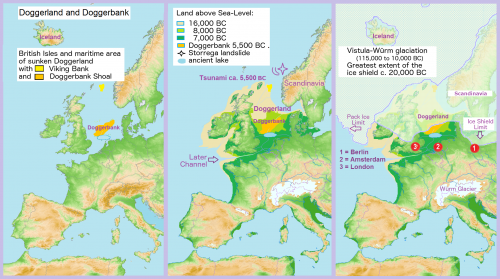






 Wirth adopta cette hypothèse et construisit sa propre théorie sur elle, la « théorie hyperboréenne » [2] ou théorie du « cercle culturel de Thulé » [3], qui est le nom grec de la cité mythique se trouvant dans le pays des Hyperboréens. D’après cette théorie, avant la dernière vague de refroidissement mondial, la zone circumpolaire dans l’Océan nord-atlantique abritait des terres habitables dont les habitants furent les créateurs d’un code culturel primordial. Cette culture se forma dans des conditions où l’environnement naturel de l’Arctique n’était pas encore si inhospitalier, et où son climat était similaire au climat tempéré de l’Europe Centrale moderne. Cependant, étaient présents tous les phénomènes annuels et atmosphériques qui peuvent être observés dans l’Arctique aujourd’hui : le jour et la nuit arctiques. Les cycles solaire et lunaire annuels sont structurés différemment de leurs équivalents sous les latitudes moyennes. Ainsi, les fixations symboliques du calendrier, la trajectoire du soleil, de la lune et les constellations du zodiaque avaient forcément une forme différente et des motifs différents.
Wirth adopta cette hypothèse et construisit sa propre théorie sur elle, la « théorie hyperboréenne » [2] ou théorie du « cercle culturel de Thulé » [3], qui est le nom grec de la cité mythique se trouvant dans le pays des Hyperboréens. D’après cette théorie, avant la dernière vague de refroidissement mondial, la zone circumpolaire dans l’Océan nord-atlantique abritait des terres habitables dont les habitants furent les créateurs d’un code culturel primordial. Cette culture se forma dans des conditions où l’environnement naturel de l’Arctique n’était pas encore si inhospitalier, et où son climat était similaire au climat tempéré de l’Europe Centrale moderne. Cependant, étaient présents tous les phénomènes annuels et atmosphériques qui peuvent être observés dans l’Arctique aujourd’hui : le jour et la nuit arctiques. Les cycles solaire et lunaire annuels sont structurés différemment de leurs équivalents sous les latitudes moyennes. Ainsi, les fixations symboliques du calendrier, la trajectoire du soleil, de la lune et les constellations du zodiaque avaient forcément une forme différente et des motifs différents. Wirth présenta ainsi une vision très particulière de la relation entre le matriarcat et le patriarcat dans la culture archaïque de la région méditerranéenne. De son point de vue, les plus anciennes formes de culture en Méditerranée furent celles établies par les porteurs du matriarcat hyperboréen, qui en plusieurs étapes descendirent des régions circumpolaires, de l’Atlantique Nord, par voie de mer (et leurs navires avec des trèfles sur la poupe étaient caractéristiques). C’était le peuple mentionné dans les artefacts du Proche-Orient comme les « peuples de la mer », ou am-uru, d’où le nom ethnique des Amorrites. Le nom de Mo-uru, d’après Wirth, était jadis celui du centre principal des Hyperboréens, mais fut donné à de nouveaux centres sacrés par les natifs du Nord dans leurs vagues migratoires. C’est à ces vagues que nous devons les cultures sumérienne, akkadienne, égyptienne (dont l’écriture prédynastique était linéaire), hittite-hourrite, minoenne, mycénienne, et pélagienne. Toutes ces strates hyperboréennes étaient structurées autour de la figure de la Prêtresse Blanche.
Wirth présenta ainsi une vision très particulière de la relation entre le matriarcat et le patriarcat dans la culture archaïque de la région méditerranéenne. De son point de vue, les plus anciennes formes de culture en Méditerranée furent celles établies par les porteurs du matriarcat hyperboréen, qui en plusieurs étapes descendirent des régions circumpolaires, de l’Atlantique Nord, par voie de mer (et leurs navires avec des trèfles sur la poupe étaient caractéristiques). C’était le peuple mentionné dans les artefacts du Proche-Orient comme les « peuples de la mer », ou am-uru, d’où le nom ethnique des Amorrites. Le nom de Mo-uru, d’après Wirth, était jadis celui du centre principal des Hyperboréens, mais fut donné à de nouveaux centres sacrés par les natifs du Nord dans leurs vagues migratoires. C’est à ces vagues que nous devons les cultures sumérienne, akkadienne, égyptienne (dont l’écriture prédynastique était linéaire), hittite-hourrite, minoenne, mycénienne, et pélagienne. Toutes ces strates hyperboréennes étaient structurées autour de la figure de la Prêtresse Blanche. Entretemps se forma en Asie continentale un pôle culturel qui représentait l’embryon du proto-patriarcat. Wirth associait cette culture au naturalisme primitif, aux cultes phalliques, et à un type de culture martial, agressif et utilitaire, que Wirth considérait comme inférieur et asiatique. Nous avons consacré un volume entier à un exposé plus détaillé des idées de Wirth [7].
Entretemps se forma en Asie continentale un pôle culturel qui représentait l’embryon du proto-patriarcat. Wirth associait cette culture au naturalisme primitif, aux cultes phalliques, et à un type de culture martial, agressif et utilitaire, que Wirth considérait comme inférieur et asiatique. Nous avons consacré un volume entier à un exposé plus détaillé des idées de Wirth [7].

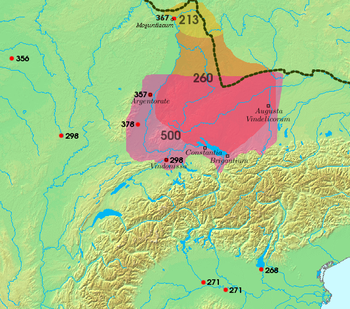
 The "major military defeat" Heather refers to is not only the Battle of Strasbourg but the later Battle of Solicinium in 367 CE, in which Valentinian I defeated the Alemanni in the southwestern region of Germany. Even though he was victorious, the Alemanni were by no means broken and were still a formidable force some 80 years later when they joined the forces of
The "major military defeat" Heather refers to is not only the Battle of Strasbourg but the later Battle of Solicinium in 367 CE, in which Valentinian I defeated the Alemanni in the southwestern region of Germany. Even though he was victorious, the Alemanni were by no means broken and were still a formidable force some 80 years later when they joined the forces of 

 The ancient Greeks are more than strange beings so far as post-60s “liberal democracy” is concerned. Certainly, the Greeks had that egalitarian and individualist sensitivity that Westerners are so known for.
The ancient Greeks are more than strange beings so far as post-60s “liberal democracy” is concerned. Certainly, the Greeks had that egalitarian and individualist sensitivity that Westerners are so known for.




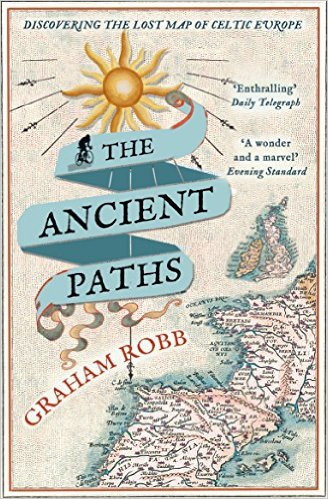 'Important if true” was the phrase that the 19th-century writer and historian Alexander Kinglake wanted to see engraved above church doors. It rings loud in the ears as one reads the latest book by
'Important if true” was the phrase that the 19th-century writer and historian Alexander Kinglake wanted to see engraved above church doors. It rings loud in the ears as one reads the latest book by 
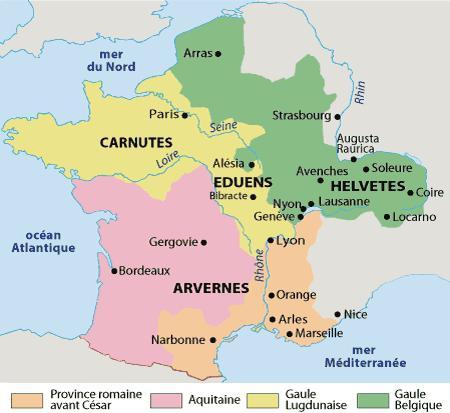



 Professor Hans Giffhorn of Germany has made studying the Chachapoyan civilization his life’s work and has advanced an interesting theory regarding its origin. After many years of research starting in the 1990’s, Professor Giffhorn published a fascinating German language book in 2013 entitled
Professor Hans Giffhorn of Germany has made studying the Chachapoyan civilization his life’s work and has advanced an interesting theory regarding its origin. After many years of research starting in the 1990’s, Professor Giffhorn published a fascinating German language book in 2013 entitled 



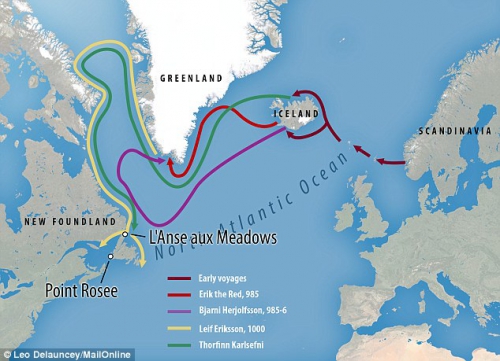
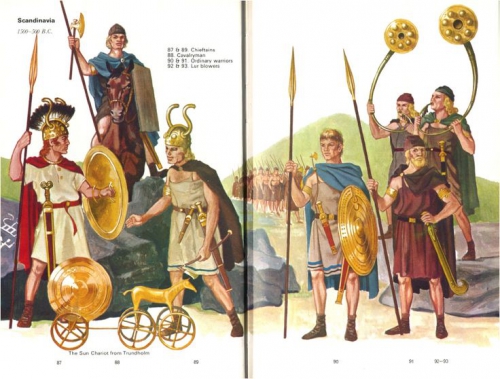
 Coupled to his assertion that the Germans had no Druids, Caesar was possibly making a declaration of their apparent primitivism and lack of philosophical gods and ideals. Surely no Roman would stoop to this? Caesar had his eyes on conquest…
Coupled to his assertion that the Germans had no Druids, Caesar was possibly making a declaration of their apparent primitivism and lack of philosophical gods and ideals. Surely no Roman would stoop to this? Caesar had his eyes on conquest…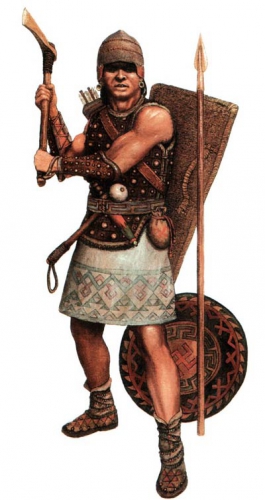 A l’origine des Européens, il y avait un peuple préhistorique. Il n’a laissé aucune trace tangible, aucune écriture aisément reconnaissable, à part quelques symboles solaires abandonnés sur quelques pierres, depuis l’Irlande jusqu’à la Russie. Les linguistes du XIXème siècle, qui en ont découvert l’existence en comparant entre elles les langues de l’Europe moderne avec celles de plusieurs peuples d’Asie, ont appelé ce peuple les Indo-Européens car leurs héritiers ont peuplé un espace allant de l’Europe entière jusqu’à l’Iran et au nord de l’Inde.
A l’origine des Européens, il y avait un peuple préhistorique. Il n’a laissé aucune trace tangible, aucune écriture aisément reconnaissable, à part quelques symboles solaires abandonnés sur quelques pierres, depuis l’Irlande jusqu’à la Russie. Les linguistes du XIXème siècle, qui en ont découvert l’existence en comparant entre elles les langues de l’Europe moderne avec celles de plusieurs peuples d’Asie, ont appelé ce peuple les Indo-Européens car leurs héritiers ont peuplé un espace allant de l’Europe entière jusqu’à l’Iran et au nord de l’Inde. Leur religion était celle d’hommes libres. Les dieux étaient honorés autour de sanctuaires de bois, avec des « idoles » de bois pour les personnifier et servant d’objet intermédiaire pour les contacter. Tous savaient que les dieux vivaient au ciel (*akmon, un « ciel de pierre ») et pas dans des sculptures. Ils possédaient sans doute des temples de bois (*temenom) réservés aux prêtres. Les figures divines étaient aussi bien masculines que féminines, sans que les unes aient un ascendant sur les autres, à l’exception du ciel-père (*dyeus) et de la terre-mère (*dhghōm), son épouse. Le rapport entre l’homme et le dieu n’était pas celui entre un esclave et son maître, mais entre amis, même si l’un était mortel et l’autre immortel. Les dieux se mêlaient aux mortels et parfois s’unissaient à certains d’entre eux, faisant naître des héros et des protecteurs. Ils n’avaient pas besoin de créer un mot comme « laïcité » car ils l’étaient par nature.
Leur religion était celle d’hommes libres. Les dieux étaient honorés autour de sanctuaires de bois, avec des « idoles » de bois pour les personnifier et servant d’objet intermédiaire pour les contacter. Tous savaient que les dieux vivaient au ciel (*akmon, un « ciel de pierre ») et pas dans des sculptures. Ils possédaient sans doute des temples de bois (*temenom) réservés aux prêtres. Les figures divines étaient aussi bien masculines que féminines, sans que les unes aient un ascendant sur les autres, à l’exception du ciel-père (*dyeus) et de la terre-mère (*dhghōm), son épouse. Le rapport entre l’homme et le dieu n’était pas celui entre un esclave et son maître, mais entre amis, même si l’un était mortel et l’autre immortel. Les dieux se mêlaient aux mortels et parfois s’unissaient à certains d’entre eux, faisant naître des héros et des protecteurs. Ils n’avaient pas besoin de créer un mot comme « laïcité » car ils l’étaient par nature.









 La pièce maîtresse du dépôt funéraire est un grand chaudron orné en bronze, dans lequel on mettait du vin coupé d'eau. Il pourrait avoir été réalisé par des artisans étrusques. Il contient un pichet à vin (oenochoe) en céramique attique à figures noires, fabriqué par des Grecs. Ce mobilier "atteste des échanges qui existaient entre la Méditerranée et les Celtes", souligne Dominique Garcia. La tombe date de la fin du Premier âge du Fer (période dite du Hallstatt).
La pièce maîtresse du dépôt funéraire est un grand chaudron orné en bronze, dans lequel on mettait du vin coupé d'eau. Il pourrait avoir été réalisé par des artisans étrusques. Il contient un pichet à vin (oenochoe) en céramique attique à figures noires, fabriqué par des Grecs. Ce mobilier "atteste des échanges qui existaient entre la Méditerranée et les Celtes", souligne Dominique Garcia. La tombe date de la fin du Premier âge du Fer (période dite du Hallstatt).


 Les arbres seraient morts il y a plus de 4500 ans, au moment de la montée des eaux, mais auraient été préservés grâce à la constitution d'une couche de tourbe très alcaline où, privées d'oxygènes, les petites bêtes qui se chargent normalement de décomposer les arbres morts n'ont pas survécu, et donc pas pu faire disparaître ces souches. Le mythe, comme tant d'autres, est peut-être un souvenir collectif populaire laissé par la montée graduelle du niveau de la mer à la fin de la période glaciaire ; sa structure est comparable à la mythologie du Déluge comme tant d'autres que l'on retrouve dans pratiquement tous les cultures anciennes. Les restes d'une forêt ancienne engloutie à Borth, et à Sarn Badrig, près de la, peuvent avoir suggéré qu'une grande tragédie pouvait avoir emporté une ville qui se trouvait la autrefois. Il n'y a pas encore d'évidence physique solide qu'une ville substantielle existait sous la mer dans cette région.
Les arbres seraient morts il y a plus de 4500 ans, au moment de la montée des eaux, mais auraient été préservés grâce à la constitution d'une couche de tourbe très alcaline où, privées d'oxygènes, les petites bêtes qui se chargent normalement de décomposer les arbres morts n'ont pas survécu, et donc pas pu faire disparaître ces souches. Le mythe, comme tant d'autres, est peut-être un souvenir collectif populaire laissé par la montée graduelle du niveau de la mer à la fin de la période glaciaire ; sa structure est comparable à la mythologie du Déluge comme tant d'autres que l'on retrouve dans pratiquement tous les cultures anciennes. Les restes d'une forêt ancienne engloutie à Borth, et à Sarn Badrig, près de la, peuvent avoir suggéré qu'une grande tragédie pouvait avoir emporté une ville qui se trouvait la autrefois. Il n'y a pas encore d'évidence physique solide qu'une ville substantielle existait sous la mer dans cette région.